
As I wrote in the previous post, I spent last weekend in Hong Kong and I've gotta say it was one damn good trip. The weather was not so awesome, between the disgustingly hot and humid afternoons, the rainy evenings, and the year's first typhoon which we got caught in on our first night. But you know what, even all that wasn't enough to put a damper on the weekend. First class stuff.
We stayed in the Intercontinental Hong Kong, which I am convinced has the best view of any hotel in the city. Don't believe me?
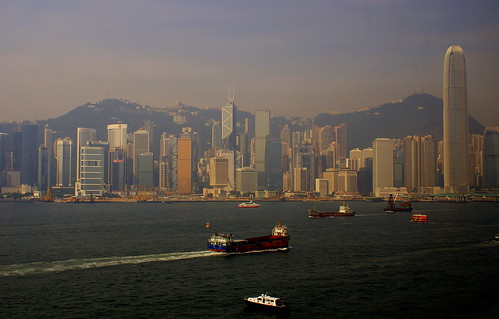
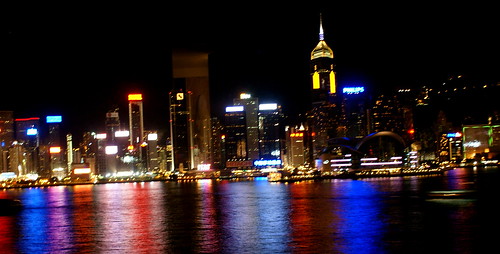
The view from our room in the morning and at night. That's the heart of Hong Kong you're looking at. Too sexy... Everything about the hotel was beautiful too. Hands down the nicest hotel I've ever stayed in. It made for a great place to start and end each day.
We saw some really cool things and I took a bunch of good pictures, but food was a major part of the trip and this is supposed to be a food blog, so I'm going to focus on some of the eats. I didn't take a picture of everything we ate (though I certainly wanted to!) as I'm still not total comfortable whipping out my big DSLR in the middle of a restaurant and snapping away just yet. I also didn't get great pictures of several dishes as I tended to rush things so as to be able to put the camera away as quickly as possible. That being said, some of them turned out quite well and make my stomach happy just looking at them.
Food is ridiculously inexpensive in HK. We were hard pressed to break $60~70 on a meal for the two of us and often found that $30, the bare minimum price for an evening at an izakaya in Tokyo, was enough to stuff us both with quality food. It's probably a good thing that I don't have access to food like that here or I'd cook way less and almost certainly gain a good bit of weight.
I made a point to eat things that the area is known for. I can get Japanese food easily enough around here and it would probably be better, but there are a lot of Chinese dishes that are hard to find in Tokyo.

Char Siu Bao: Chinese BBQ pork buns. I could eat these every day for the rest of my life and never get tired of them

Shao Lung Bao: Soup dumpling. The filling is made with a type of gelatin (I think that's right). Anyway, the way it works is that the filling is solid when the dumplings are put together, then melts when they are steamed, giving it a soupy filling. I'm thinking of learning how to make these, so I suppose I'd better figure out how they actually do the filling...
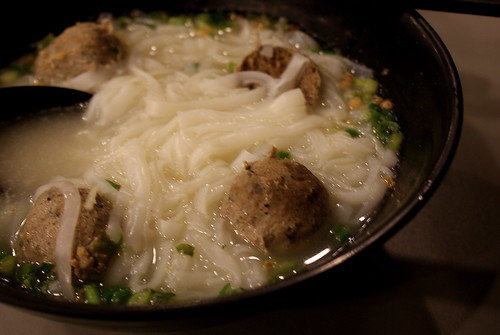
Noodle soup with Black Pepper Beef Balls. The number of jokes that can be made about beef balls is pretty much endless, but that doesn't change the fact that they're delicious. One of the staple foods of eateries in HK is noodle soup, usually made up of a light broth, rice noodles, and whatever else you want put in there. Filling, delicious, light, and at ~US$4-5 a bowl super affordable.

Kiwi juice. One of the hands down worst things about Japan is how stupid expensive fruit is. It is borderline offensive what they charge for some things. But not in Hong Kong. Oh no, HK throws fruit at you left and right. This bottle of kiwi juice is just an example of the tons of kinds of 100% fruit juices available for US$1-2 at just about every convenience store. On top of that, there are tons of fresh juice shops scattered about Kowloon where they will cut the fruit in front of you, toss it in a juicer, and hand you the glass. That's about as pure as it gets and the perfect remedy for the oppressively hot summer days. Just some of the kinds we tried: Kiwi, Mango, Guava, and Dragonfruit. We were looking watermelon juice, but couldn't seem to find it anywhere.
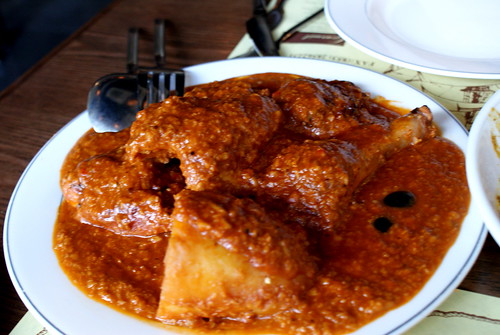
African Chicken @ Henri's Galley. A Macau specialty, I'm still not sure what relationship it has to Africa or why it's in Macau, but it is freakin good and cost less than US$30 for half a chicken's worth!
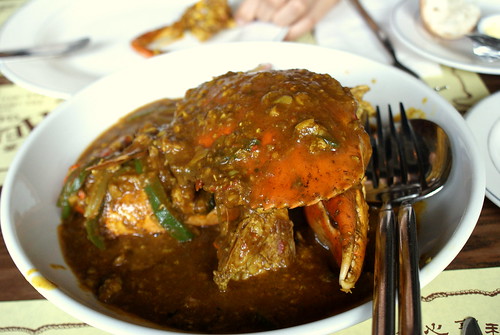
Curry Crab @ Henri's Galley, another Macau specialty. When we ordered it they brought out a bucket with a live crab in it for our inspection and quoted a price. Less than US$40 for the whole crab! Crab is messy business as it is and even more so when it's coated in curry sauce, but man was it good. It had one of the biggest pincers I have ever seen on a crab, which made for one giant chunk of crab meat.
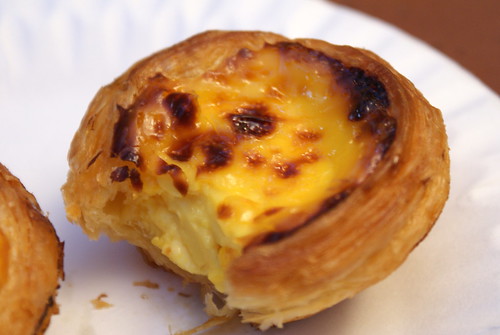
Egg Tart @ Cafe e Nata, the place that supposedly invented the Macanese style egg tart. Buttery crust, silky filling. Simple and pleasing, I ate two and that was probably my limit for one sitting. I imagine these would probably go really well with milk tea.
It had been almost a year since I had last been on a trip and this one was a great way to get back in the groove. It was such a good time that we have already settled on our next destination: Korea! I think the game plan will be to hit it up sometime in the fall, possibly over the long September break (unless the prices are ridiculous). I've got lots of countries left to visit in Asia and not nearly as many holidays, so I'll be trying to take my chances from here on out!








